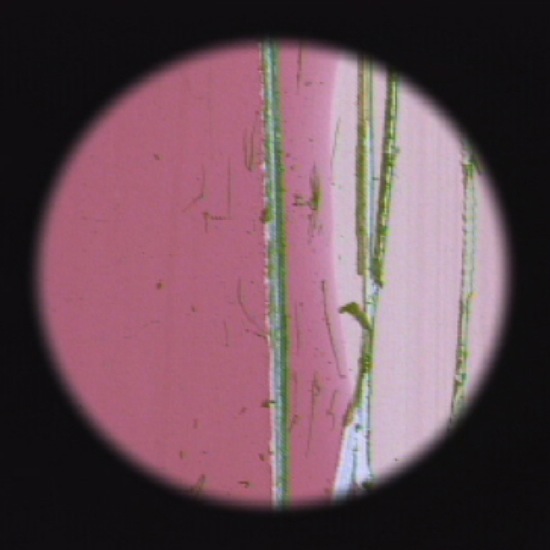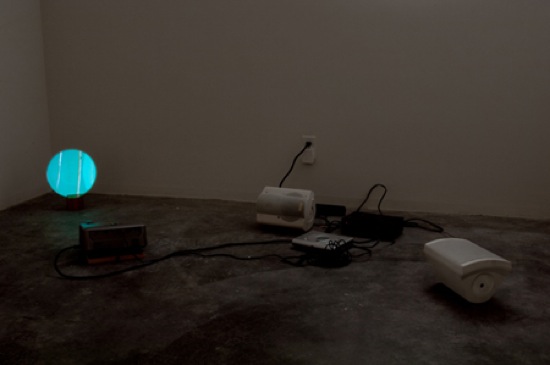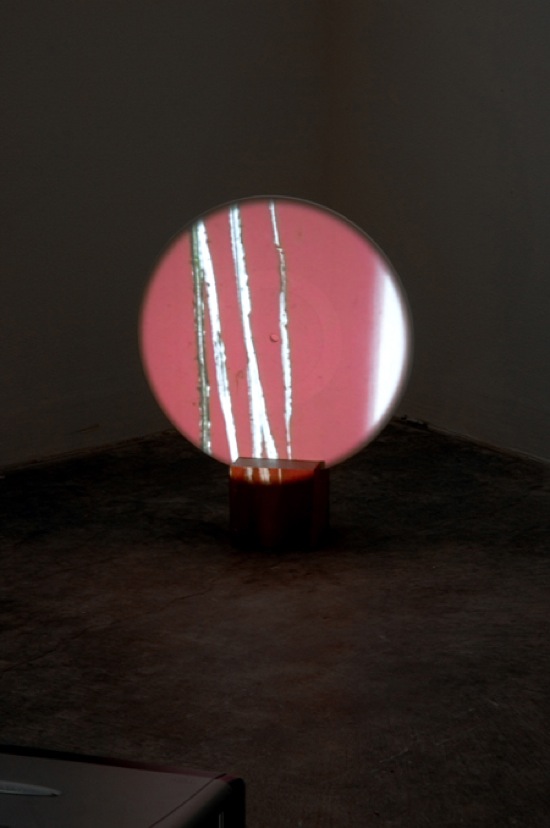2008
16mm
color
sound
18 minute loop
moon (both receiver and transmitter… there now remained) was part of a larger body of work related to the translation of musical notation into visual works. this piece was specifically inspired by the discovery of some drawings done with an apparatus designed by edouard-leon scott de martinville, called a phonautograph in france in 1850. the apparatus created a ‘drawing’ by engraving sound with a needle into a soot covered piece of paper. scientists discovered the drawings in 2007; and although there was no intention on scott de martinville’s drawings to be played back as sound, the scientists who discovered the phonautograph drawings in 2007 were able to “play” the drawings using lasers and computer software. the drawings are considered the earliest known sound recordings. while the 10 second fragment seemed to contain the sound of a girl, purportedly the voice of scott’s daughter singing the french lullabye: au clair de la lune.
since the original process of the phonautograph went from sound to drawing, i wanted to take the recent playback and shift it back into a drawing. the first step was to coat 16 strips of 16mm film with different colors of ink in relation to early photographic plates (and the entire layout of the strips matched the paper size of scott’s original phonoautograph drawing. i then took each strip in hand, and with my eyes closed i listened to the 10 seconds of sound while scratching the ink stained film strip with a needle – as if a human version of scott de martinville’s machine.
after the film drawings were transferred to video, the footage was slowed down, so that each drawing – like the original recording – was 10 seconds long. next, i watched projections of the moving lines and tried to use them as a kind of interpretive score, humming low tones when the lines moved towards the left and high tones when the lines were moving to the right. i improvised along with all of the sequences four times, and depending on the density of the drawn lines in a segment, i used one, two, three, or four of the voices.
the title of the piece is two sentence halves from rilke’s text primal sound, in which he talks about making recordings in grammar school using cardboard tubes, wax and wire brush bristles. he also equates sound lines scratched into a surface with the lines on a skull.
the “screen” for the projection is a plaster cast of an early edison record (chosen because of the thickness of edison discs as compared to the thinner columbia discs). somewhere in this game of telephone, one moves through artifacts of various recording histories, to a place where transcription and translation are tools of transformation.
the piece is presented in a dark room, looped at soft volume. it is also part of the permanent collection of the los angeles county museum of art, as well as the EMST, the national museum of modern art in athens, greece.


